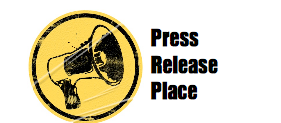THE digital revolution might be happening in your office but it’s not happening everywhere it seems.
Politicians are calling for education and training to be targeted at combating ‘digital exclusion’ with an estimated 5.8 million people still never having used the internet and an additional 745,000 workers with digital skills likely to be needed by 2017.
As advances in technology continue to dominate our lives it seems hard to believe that almost one-in-five adults still have no basic skills when it comes to becoming part of the digital era. Businesses are being left in the dark ages with almost a quarter of them lacking the very basic digital skills for even getting online, never mind promoting businesses, marketing their brand, selling their product and telling the rest of the world what they do.
The stark reality is that is small and medium businesses do not have these skills in 2016 then they will struggle to be around in 2020.
So, what are these five skills and what business expertise do you need to survive in the new digital landscape? Here are a few pointers:
Managing information: The internet can be a minefield of information and a lot of it can be very confusing – especially for small businesses who are venturing out into the wide world of the web. Google Analytics is, for some, the first port of call as you can extract long-term data to reveal trends and other good information to allow you to make decisions about which direction your business should move in. Having a content management system (CMS) in place for your company will help you publish, organise, delete edit and modify any content you publish on your website, in short it’s an essential tool for any small business. As your business grows it might be an idea to invest in a Customer Relationship Management (CRM) system which manages a company’s interaction with current and future customers.
Communicate: Having to communicate your messages is key to your business performing at a higher level, whether this be through targeted marketing campaigns, regular newsletters or through social media platforms. Getting your messages out to the wide world is an essential tool to have for any small business because if people don’t know you are there in a few short years you might not be. These days, social media is one of the best and most effective ways of communicating with your audience and there’s plenty of platforms out there to help your business. With 30 billion pieces of content shared on Facebook each month it’s worth getting to know your head around social.
Chasing payments: Having a website which accepts payments takes the stress off chasing clients for those all-important bills. An e-commerce site for small and medium-sized business is now becoming a necessity rather than the norm as payment processing technology has come on leaps and bounds over the past few years. Accepting credit-card payments requires businesses to have, at minimum, a merchant account with a payment gateway. Although payment processing may not seem directly related to information management, a great deal of sensitive information is captured, transmitted and stored by payment gateways so it’s paramount to have a secure system in place to ensure data privacy. The advent of Apple Pay has also seen businesses latch on to new ways of accepting payment.
Problem solving: Having an accessible website for customers is an essential tool for small businesses. Being one step ahead of the game is not always an easy task but if you know what your customers are after then you can create content on your site which they might be looking for should they become an advocate. An FAQ section alongside the contact section might be an easy way for them to get the answer they are looking for instead of contacting you in the first instance. Having tabs to social media outlets so they can contact you by any medium. Think about the “wouldn’t it be great if….” and you won’t be going far wrong.
Creating online content: The internet itself plays a big part in helping you enhance your skills. Paid tutorials are very cheap to come by and free tutorials are even better. Having even the most basic social media knowledge is enough to get you started with creating online content like blogs and posting updates on your social media pages. With content like video and animation (which is more commonly viewed online now on sites like Vimeo and YouTube) design communities like Behance and Pinterest help with advertising and circulating your work. Pinterest is successful in spreading around your work to like-minded individuals and also provides you with inspiration. With Behance, the addition of helpful critiques and suggestions from industry experts help you grow as a designer and becoming that all-important multi-tasker.

